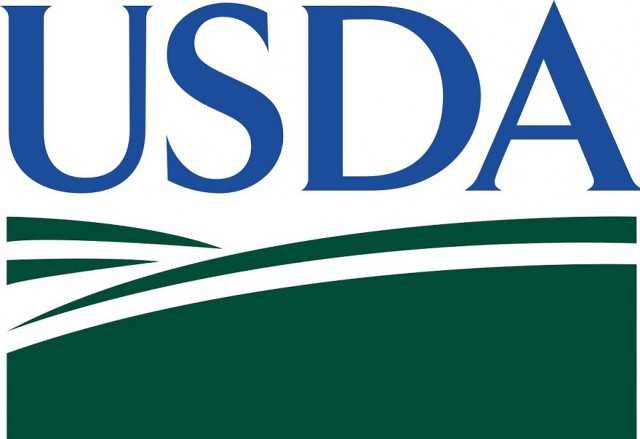DAR ES SALAAM, Tanzania – Coffee production in Tanzania is forecast to increase 21 percent to 1.35 million bags in MY 2023/24 due to a recovery from drought conditions and trees entering the most productive period of their three-year yield cycle, according to a new report from USDA’s Gain Report. Post estimates MY 2023/24 exports will increase 13 percent to 1.27 million bags due to higher exportable supplies.
In 2018, the Government of Tanzania (GoT) supported distribution of high-yielding Arabica coffee seedlings which replaced older varieties in existing plantations. These seedlings have since matured and are poised to enter the highest-yielding period of their three-year cycle.
MY 2023/24 area harvested is expected to remain unchanged at 265,000 hectares. The GoT has set ambitious goals to increase overall coffee production, however most of its efforts have focused on improving yields in existing plantations as opposed to expanding acreage.
According to the GoT, in October 2022, 3 million new Robusta seedlings were distributed to farmers free of charge under the government’s 2021-2025 coffee development strategy. According to local sources, these seedlings were largely used to replace older coffee trees on existing farms.
Tanzania coffee is cultivated under three different production regimes, including small-scale mono-cropping in the south; small-scale intercropping with bananas near Lake Victoria and in the north, east, and west; and large-scale estate farming in the north and south.
Roughly 90 percent of Tanzanian coffee is produced by smallholder farmers, while 10 percent is produced by larger estates. Compared to larger estates, smallholder farmers often lack access to finance and depend more on family labor for production.
The bulk of Tanzania’s harvest for both Robusta and Arabica begins in July and extends until October. Coffee may continue to be harvested in smaller volumes until December.
Coffee remains Tanzania’s most important cash crop and contributes indirectly to the incomes of six to seven percent of Tanzania’s total population of 56 million, including more than 40 percent of Tanzania farmers. Most coffee farms are small with an average of .63 hectares of land and cultivate between 380 and 2,000 trees.
In general, inefficient use of farming inputs such as fertilizer, poor agricultural practices, and limited credit access hinder coffee productivity in Tanzania.
Changes to MY 2022/23
Post estimates MY 2022/23 production fell 13 percent year-on-year due to drought conditions. Tanzania receives rainfall during two seasons: the short-rain season in the fall and the long-rain season in the spring. In Fall 2021, little to no rain fell in the short-rain season, depressing yields for the July 2022 harvest.
Additionally, Arabica yields were negatively impacted by rising fertilizer prices that discouraged application. During the spring of 2022, fertilizer prices nearly doubled compared to the same period the year before. Arabica production was likely affected more by this price hike than Robusta as Arabica farmers use fertilizer to improve yields while Robusta farmers largely do not.
Tanzania: Coffee consumption in MY 2023/24
Post anticipates MY 2023/24 consumption will increase slightly to 77,000 bags from 75,000 the year before due to growth in Tanzania’s tourism sector. After a decline in international visits associated with the Covid-19 pandemic in MY 2021/22, local sources indicate Tanzania’s tourism sector has recovered and is resuming its pre-Covid growth trend.
According to the World Tourism Organization, from 2015 to 2019, the number of international visitors to Tanzania increased 34 percent, reaching 1.53 million visitors in 2019. New hotel construction in Dar es Salaam, Arusha, and Zanzibar will likely facilitate an increase in international visitors. Prior to the Covid-19 pandemic, Tanzania experienced a boom in hotel construction, particularly in Zanzibar, where the total number of hotels increased from 378 (in 2013) to 620 (in 2020).
Non-tourist consumption is expected to remain unchanged. Most Tanzanians continue to prefer tea to coffee, due to consumer preferences and tea’s relative affordability. Tea is generally less expensive than coffee. According to the Tanzania Coffee Board, only 7 percent of Tanzania’s production is consumed domestically.
Changes to MY 2022/23
MY 2022/23 consumption is anticipated to increase from 40,000 to 75,000 bags year-on-year as the tourism industry recovers from Covid-19 related impacts. While Tanzania did not enforce significant Covid-19 related restrictions, the pandemic depressed visits from international travelers, driving down consumption.
Tanzania: Coffee trade
Post forecasts MY 2023/24 exports will increase 13 percent to 1.27 million bags as higher production increases exportable supplies. Tanzania’s top markets include the EU, Japan, the United States, Morocco, Russia, South Korea, India, Australia, and South Africa (Table 2).
Changes to MY 2022/23
MY 2022/23 exports are expected to decline 7 percent year-on-year to 1.16 million bags as lower production associated with drought conditions decreases exportable supplies.


















